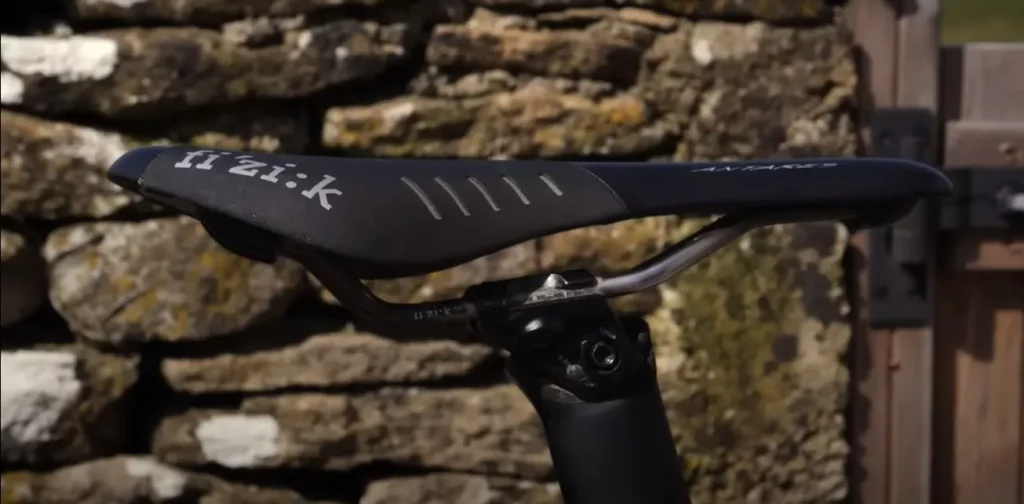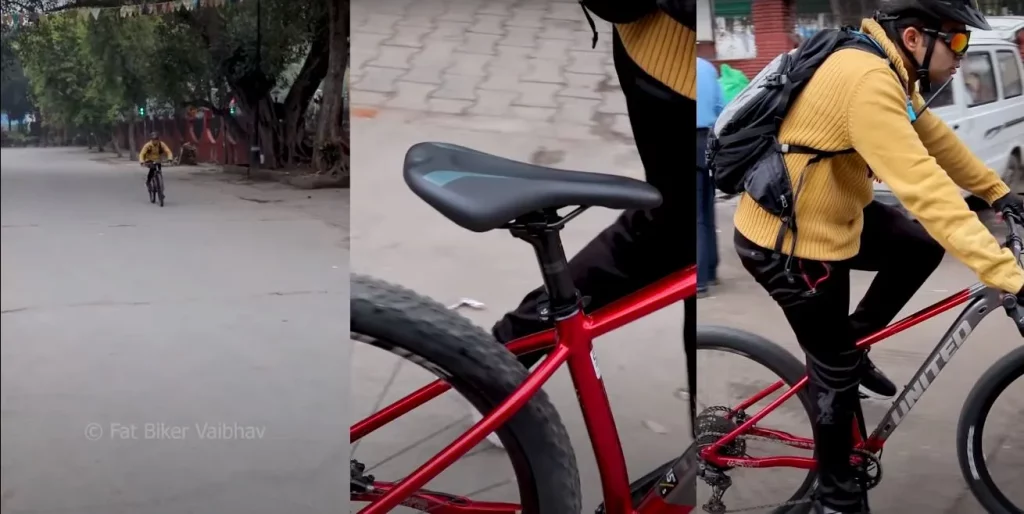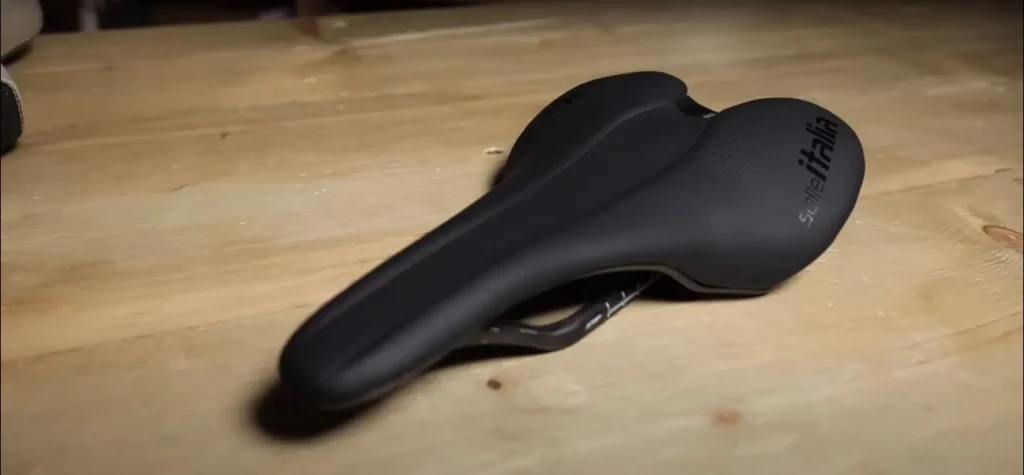Reasons Why Bike Seats Are Uncomfortable

On both road bikes as well as mountain bikes, the majority of the seats are unpleasant to sit in while riding. The saddle may be the main source of discomfort most of the time. You must first understand the roots of the discomfort in order to figure out why saddles have formed the way that they are.
Table of Contents
Short Answer:
Why bike seats are so uncomfortable? Bike seats could be unpleasant for many separate reasons. The riders’ sitting bones should be maintained by bike seats, not their whole weight. Legs can move freely when riding, thanks to their unique designs. Comfort levels may also be improved significantly by appropriate rider posture and seat adjustments.
It is caused by a variety of factors, such as clothes and inappropriate handlebar positions, to list a few. By being aware of these sources of suffering, you can minimize discomfort and complete a few extra miles.
Why Are Bike Seats So Uncomfortable?
The sit bones of a rider are the only portions of their body weight that a bike seat is intended to assist with. In order to allow our lower body to move around freely when biking, they have an unusual and slim form. Also, while riding, your posture and the proper seat adjustments have a major impact on your experience.
The Underlying Factors

Talking about why bike seats are so uncomfortable, here are some of the most frequent reasons a bike seat is bothersome. Your awareness of some will aid your ability to concentrate on the problem in question.
- Unsuitable Bike Size
Even with the finest gears, a bike that is too big or overly small for us may result in a major effect on our sitting position, which is essential to our comfort. Many people believed that mountain bike seats were designed to be the most uncomfortable things on planet Earth. They had no idea, though, that they just had the wrong size bike. Because of this, we strongly recommend choosing a high-quality mountain bike with the proper size for you.
- Unsuitable Handlebar Position
Your bike seat may ache if your handlebars are adjusted improperly. It’s possible that you are not in the right position if you find that you are tilting too forward or backward. This is brought on by handlebars that are either too low or too high, which might also result in a shorter or a greater range than is needed. You may have a fantastic comeback if you identify the right combination for yourself.
- Apparel
Relaxation for your sitting bones is only one of the many benefits of choosing the proper athletic gear. As important as your bike is, you must also ensure you have the right clothes and accessories. Safeguarding from bike seat discomfort is ensured through the application of Personal protective equipment (PPE) with ergonomic cushioning and skin-tight fitting.
Not A Seat, But A Saddle
It makes perfect sense to refer to the item you sit on as a seat for a beginner rider. Yet, the seat is specifically referred to as a saddle in the biking community. Although it could seem to be a semantic argument, there are significant differences. The primary distinction between a seat and a saddle lies in the fact that the former is intended to support your entire body weight, whereas the latter does not.
What happens to the rest of your body weight if a saddle is only intended to support a fraction of your weight? Your body weight should be balanced mostly over the pedals. It will be much simpler for you to feel relaxed if you are mindful of this key distinction between a seat as well as a saddle. It doesn’t make sense to use the same luxury characteristics as a typical seat on a bike.
Why Are Bicycle Seats So Narrow And Tiny?

It’s possible that when you first acquire a bike, you’ll be wondering, “I have to ride on that??” when you glance at the seat. Despite the odd shapes of bike saddles, there are genuine reasons for these designs. Despite the fact that there have been several attempts to rebuild the bike seat completely, none of them has really modified it.
- Although there are some differences in shape as well as certain advanced materials that have established constants, the chairs are often extremely unpleasant. But why do these angular and slim forms remain the most common-looking ones nowadays?
- The stiffer, narrower chairs are generally the comfier, despite what would seem to be the situation. But let’s take a closer look at what the seat is being utilized for before definitely ruling out any broad, padded design. Your sit bones are the most crucial point of contact on a bike seat.
- The finest holds you have for maintaining your position are these two bones. If you imagine your sit bones as little pillars maintaining your posture on the bike, you will see that they don’t move around much due to their being made of bone.
- Your butt and some other parts that come into touch with the seat are susceptible to irritation, burn, and blister as a result of the extreme contact. It’s conceivable that those softer parts will move and ache more often. So, it’s normally preferable to be seated on the seat instead of on the seat, and to achieve that; you need a firmer seat.
There is no one size fits.
This is still accurate today. There isn’t one saddle size that accommodates everyone, just like there are different shoe sizes. You could have to test out many saddles before agreeing on one that feels more comfortable to you to get the ideal fitment. There is no doubt that bike seats come in a wide range of sizes.
People would be examined for a seat in a similar fashion to how they are tested for bikes. The overwhelming majority of people are capable of discovering a seat that is the ultimate form for them. Being suited for a bike seat at the local neighborhood bike shop or supplier is not a dumb idea.
Proper posture and endurance
It’s possible that as soon as you start riding, you won’t have the ability to maintain great technique over long ranges. Inexperienced riders sometimes lack the stamina to let their legs carry most of the weight; as a consequence, they usually lean deeper into the seat, which can result in discomfort. Experiencing discomfort during the initial few weeks when your body responds is acceptable if you just start biking. Once your body gets used to biking, this soreness should go away.
After a few days of riding, if the same ache continues, it’s possible that your seat is the wrong one or that it must be changed or adjusted. Even while it’s quite likely that your seat isn’t the perfect one for you, you should try to make some alterations first.
A variety of seats for a variety of surfaces
Several seats are intended for various terrains, as well. Biking enthusiasts and road riders alike commonly occupy motionless positions in seats for long periods of time. Due to the rough terrain for mounting bikers, these will probably be in different places on the bike. Thus endurance and an aerodynamic design are also essential.
Cut-out seats are lighter and less demanding on the body since they have had the middle portion omitted. Cut-outs help to some extent in minimizing this problem since prolonged strain on the same area might damage the nerves and limit blood circulation.
Cut-outs are provided by all the big brands and might be beneficial for both female and male riders. Taking a little break every 20 to 25 minutes could prove to be an extremely beneficial extra step in this process. Standing up from your seat for even 20 seconds can dramatically reduce tension.
For various riding styles, there are various seats
For various riding styles, bike seats do exist in an array of forms. Usually speaking, the seat would be thinner the quicker you ride. This is due to the fact that as you move faster, both legs and handlebars will be supporting a larger fraction of your weight instead of your seat.
Those who are racing are more likely to lean farther forward and ride with their bodies nearer to the bike’s front bike.
This will frequently prefer a more basic seat that has a more pointy, aerodynamic design. Less violent riders can choose seats with a slight curvature in the design, which helps ease pressure on body parts that come into connection with the seat. A somewhat larger seat is typically more comfortable for them as they are additionally more prone to sit more straight.
Making Little Modifications

There are a couple of things we would advise if you were interested in changing your seat instead of purchasing an entirely new one. The secret to making tiny, gradual adjustments is to readjust your seat.
Even though you might endure a great deal of discomfort, modest modifications frequently have a huge effect. Moreover, you can discover that the modification is worsening the condition; in this situation, it’s simpler to go back if the earlier adjustment was minor. In order to be able to go back to observe what you changed, it is also recommended that you keep a record of your adjustments. You can immediately shift it back if the modification has a bad influence.
The suitable seat
It is somewhat hard to move around on the seat, whereas bikers will adjust their hands and feet on their bikes to relieve strain and discomfort. It is hardly surprising that a majority of riders have difficulties with bike seats.
By first ensuring that the fitment of both the seat as well as the bike suits your body type, riding technique, and environment, it is possible to significantly reduce the irritation. This will probably entail visiting the local bike shop to test various seats. Long-term gains are most likely experienced by riders who are prepared to commit to a somewhat stiffer and smaller structure and resist the urge to choose the largest, softest seat.
Although gel offers good concessions, the fitment is the most critical part. Following that, the trick to a more comfy ride is micro-adjustments, fine-tuning, and cushioned shorts.
FAQs:
What should the comfort level of a bike seat be?
Because of the widespread misconception that bike seats are necessarily unpleasant, some people may be prevented from riding totally. There shouldn’t be any stinging, discomfort, rubbing, or pinching in a decent seat. A perfect seat for oneself is the one that you don’t feel is there, equivalent to a good pair of bib shorts.
Which is better, a firm or a soft bike seat?
Hard bike seats are usually preferred since they encourage you to acquire a somewhat more muscular sitting position, which helps your bike faster and lesser irritation points form. Since they transmit part of the stress from the sit-bones to surrounding areas, softer, cushioned seats might burn.
What riding position is the most comfortable?
The majority of women favor a degree or two downward, whereas the majority of males prefer a saddle nose inclined one or two degrees upward. Nonetheless, it even is a decent beginning point. It can be adjusted afterward. Place your seat level. The rider will slide down forward if the seat is slanted excessively forward, imposing too much strain on the arms and handlebars.
Conclusion:
Everyone who rides a bike is desperate to address their bike seat issue and enjoy a comfortable ride. Modifying the height, inclination, and cover may substantially address the issue. Visit your local bike shop to receive measurements for the appropriate bike size, seat shape and design, and cushioning for the environment and riding stance. Thus, make smart plans in advance to avoid regretting them afterward. With these little adjustments, you may fix your bigger problems, have the most comfortable bike seat, and never question why are bike seats so uncomfortable.
